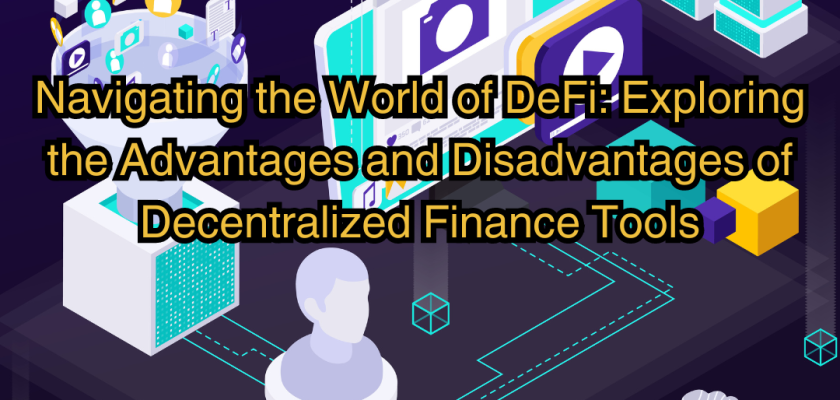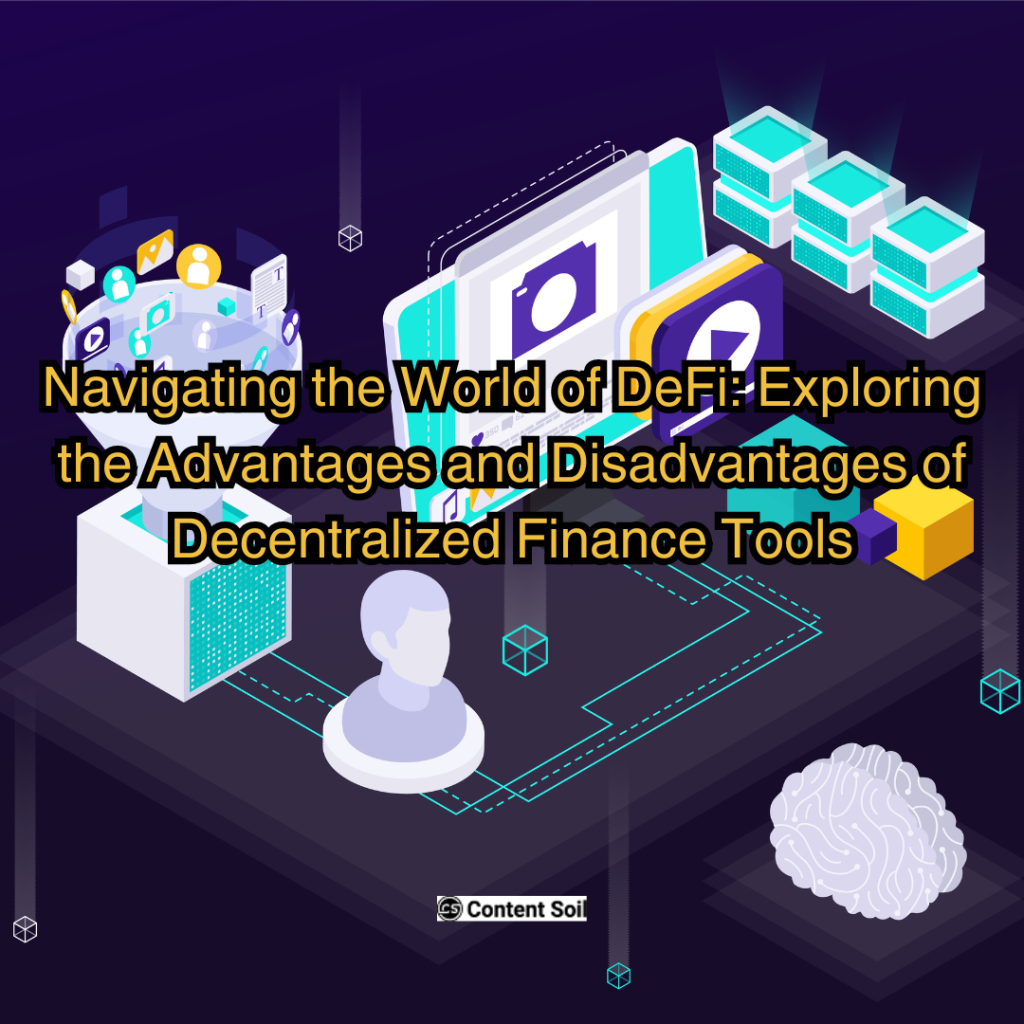Introduction:
Decentralized finance (DeFi) tools revolutionize the financial landscape by leveraging blockchain technology to offer open, transparent, and accessible financial services without traditional intermediaries. These tools encompass a range of applications, including decentralized exchanges, lending platforms, and yield farming protocols, providing users with enhanced control over their assets. DeFi promotes financial inclusion, reduces transaction costs, and fosters innovation through composability and interoperability. However, it also presents challenges such as security vulnerabilities, regulatory uncertainties, and user complexity. As DeFi continues to evolve, it holds the potential to transform the way individuals and institutions interact with financial systems globally.
Definition and operating of defi tools:
Decentralized finance (DeFi) tools are digital applications built on blockchain technology designed to replicate and enhance traditional financial services. These tools operate without intermediaries, enabling peer-to-peer financial transactions through smart contracts. Key DeFi applications include decentralized exchanges (DEXs), lending platforms, and yield farming protocols. By leveraging blockchain’s transparency and security, DeFi tools offer increased accessibility, lower transaction costs, and greater financial control. However, they also come with challenges such as security risks, regulatory uncertainties, and user complexity. Despite these issues, DeFi continues to innovate and expand, reshaping the financial landscape.
Decentralized finance (DeFi) tools are financial applications built on blockchain technology that aim to provide financial services without relying on traditional financial institutions. These tools offer various advantages and disadvantages:
Advantages of DeFi Tools
Accessibility and Inclusivity:
-
- DeFi tools are accessible to anyone with an internet connection, providing financial services to unbanked and underbanked populations.
- No need for credit scores or traditional financial histories, broadening access.
- Transparency:
- Transactions and smart contracts on blockchains are publicly accessible, promoting transparency.
- Users can verify the legitimacy and operations of DeFi protocols.
- Control and Ownership:
- Users retain control over their funds, often without the need for intermediaries.
- Non-custodial wallets ensure that only users hold the private keys to their assets.
- Interoperability:
- DeFi platforms often integrate with each other, allowing seamless movement of assets across different protocols.
- Composability enables developers to build new financial products by combining existing DeFi services.
- Lower Costs:
- By eliminating intermediaries, DeFi tools can reduce transaction and operational costs.
- Automated processes and smart contracts reduce the need for manual oversight.
- Innovation:
- DeFi encourages innovation through open-source development and the rapid iteration of financial products.
- New financial instruments and services, such as yield farming, flash loans, and decentralized exchanges, emerge regularly.
Disadvantages of DeFi Tools
- Security Risks:
- Smart contract vulnerabilities and exploits can lead to significant financial losses.
- DeFi platforms are frequent targets for hacks and scams.
- Regulatory Uncertainty:
- Lack of regulatory clarity can pose risks for both developers and users.
- Potential for future regulations that could impact the operation of DeFi services.
- Complexity and Usability:
- DeFi tools can be complex and difficult for average users to understand and use.
- User interfaces are often not as intuitive as traditional financial applications.
- Volatility and Financial Risk:
- Many DeFi projects rely on volatile cryptocurrencies, which can lead to significant financial risk.
- Impermanent loss in liquidity pools and the potential for over-collateralization in lending platforms.
- Scalability Issues:
- Current blockchain technologies can face scalability issues, leading to high transaction fees and slower processing times during peak usage.
- Congestion on the underlying blockchain network can affect the performance of DeFi applications.
- Limited Customer Support:
- Lack of centralized customer support can make it difficult for users to resolve issues.
- Users are responsible for managing their own security, leading to potential loss of funds if mistakes are made.
Conclusion
DeFi tools represent a significant innovation in the financial sector, offering numerous advantages such as increased accessibility, transparency, and lower costs. However, they also come with substantial risks and challenges, including security vulnerabilities, regulatory uncertainty, and complexity. As the DeFi ecosystem continues to evolve, addressing these disadvantages will be crucial for its long-term success and broader adoption.


